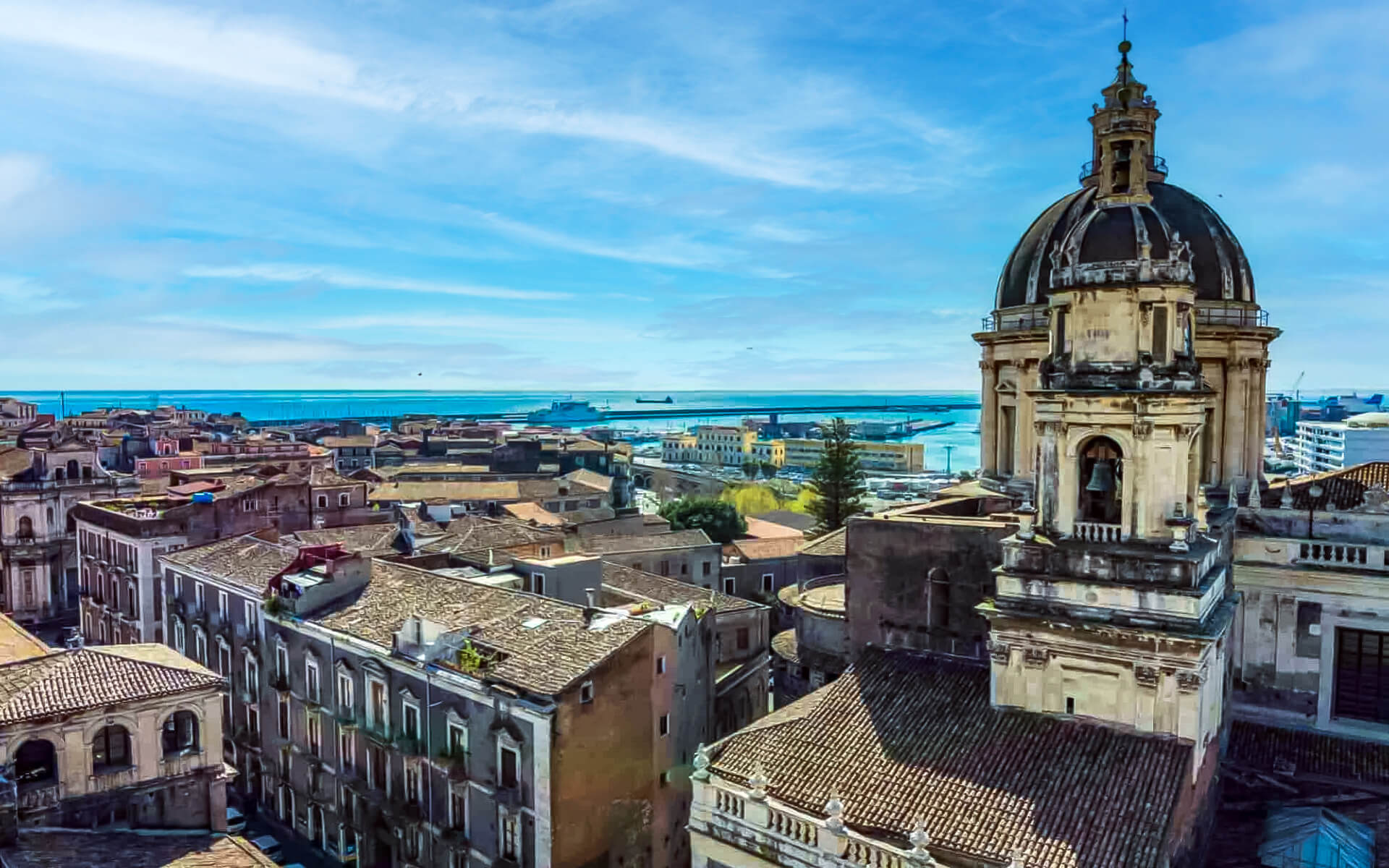Catania is a city on Sicily’s eastern coast, at the foot of Mount Etna, Europe’s largest volcano. It is the second biggest city in Sicily, with a metropolitan area of one million people, a significant transportation hub, an economic center, and a university city with a bustling downtown and a lively nightlife. Catania is particularly widely recognized for its distinctive baroque architecture and urban planning (the downtown district, together with the whole Val di Noto region, is a World Heritage Site), the result of the devastating earthquake of 1693, after which the city, like much of eastern Sicily, had to be rebuilt.
The city has a history reaching back 2700 years and has been ruled by various distinct civilizations (Greeks, Romans, Arabs, Normans, Spanish, and so on) and was a prosperous economic center, owing mostly to its port. Again, since the 1970s, the city economy has expanded as the urban area and suburbs, transforming Catania into a huge metropolitan center, primarily between the volcano and the sea. Even today, despite the presence of most of Europe’s major commercial districts (particularly Etnapolis), the ancient 17th century downtown area remains the focal point of daily life.
Catania is located under Europe’s most active volcano, which has devastated the city several times in the past. As a consequence, Catania is a city with a wide range of scenery and architecture, as well as a lot of unclean structures and abandoned residences, particularly in the highlands. However, since the city is a World Heritage Site, extensive improvements have been carried out.
Today, Catania exudes a blend of nostalgia and “joie de vivre,” particularly at night or during festivals.
SICILIAN BAROQUE
The architecture, which is largely baroque, is the city’s defining characteristic. The theatricality of Baroque architecture is its defining feature. As a consequence of the reformation/counter-reformation, this style dominated Europe in the 17th century, when the statement delivered was one of grandeur. The prior style was Renaissance, and the next style was Neoclassicism. The three main characteristics are an almost excessive level of detail (statues, tons of gold, columns and pilasters, garlands and wreaths, etc.), façades that are higher than the nave (to trick the spectator of the size), and paintings that often incorporate trompe-l’il. Catania’s Baroque style is distinguished by the use of black lava stone (basalt), the Bell on the façade, and grotesque masks and putti.


